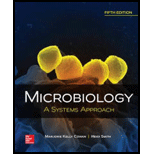
To describe:
The important events in the course of an HIV infection in the absence of treatment.
Concept introduction:
HIV (Human Immuno Virus) is a virus that can residue in the human cells without expressing its effect. It belongs to the retroviruses family and contains single-stranded RNA. HIV enzyme “reverse transcriptase” transcribes its viral genetic material, RNA into DNA so that it can actively incorporate itself into the genetic material (DNA) of the host. Acquired immunodeficiency syndrome is a condition in which antibodies for HIV are present in conjugation with certain opportunistic infections. The patients with AIDS will suffer from sudden decreases in the number of
Want to see the full answer?
Check out a sample textbook solution
Chapter 20 Solutions
Microbiology: A Systems Approach
- Describe how testing for HIV infection is accomplished.arrow_forwardOutline the phases and progression of an HIV infection. List methods of how HIV is spread and how it cannot be spreadarrow_forwardExplain how HIV affects the immune system and creates vulnerabilityto certain pathogens and other conditions.arrow_forward
- Differentiate between HIV infection, HIV disease, and AIDS.arrow_forwardDescribe how seroconversion works in HIV diseasearrow_forwarda. What precautions can a person take to prevent himself or herselffrom contracting HIV infection?b. How can a health care worker prevent possible infection?arrow_forward
- Discuss the possible mechanisms by which HIV causes a long-term chronic infection, whereas Ebola infection is acute and often rapidly fatal.arrow_forwardReview the definition of HIV/AIDS. Which symptoms of HIV/AIDS are shared by all HIV/AIDS patients?arrow_forwardWhat are the causative agents of HIV?arrow_forward
- Lifetime Physical Fitness & WellnessHealth & NutritionISBN:9781337677509Author:HOEGERPublisher:Cengage

